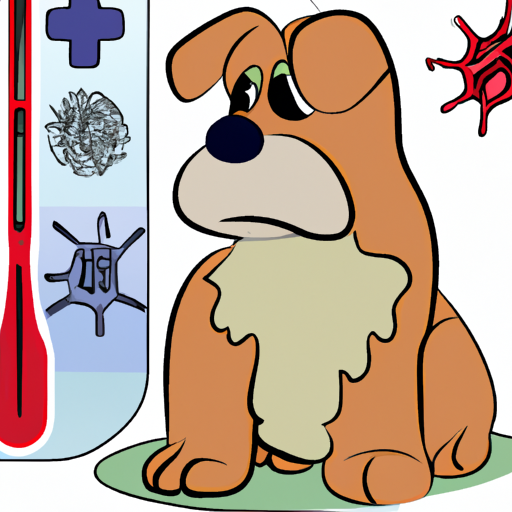When your furry friend falls ill, it can be a stressful time. One ailment that often leaves pet owners with much worry and confusion is sepsis. This is a severe condition that requires immediate attention. But what exactly is sepsis in dogs? This comprehensive guide will help you understand this critical condition, its causes, symptoms, prevention, and treatment strategies.
Table of Contents
- Understanding Sepsis in Dogs
- Causes of Sepsis in Dogs
- Symptoms and Diagnosis
- Treatment and Management for Sepsis
- Prevention Tips
- Frequently Asked Questions
Key Takeaways
- Sepsis is a critical condition caused by the body’s response to an infection.
- Sepsis can be caused by various factors, including wounds, urinary tract infections, and gastrointestinal issues.
- Early detection and treatment of sepsis are crucial to improve the dog’s survival chances.
- Preventive measures include regular check-ups, proper diet, and immediate treatment of any infections.
Understanding Sepsis in Dogs
Sepsis is a severe and potentially life-threatening condition that occurs when your dog’s body has an extreme response to an infection. It can lead to multiple organ dysfunction and, in severe cases, death. This state of systemic inflammation is a medical emergency that requires immediate attention.
Causes of Sepsis in Dogs
Sepsis can result from any infection, but it is commonly associated with severe or untreated infections. Factors that can lead to sepsis include wounds (especially if they are infected), urinary tract infections, gastrointestinal issues, and periodontal diseases. Pneumonia, pancreatitis, and parvovirus are also potential causes of sepsis in dogs.
| Common Causes of Sepsis in Dogs |
|---|
| Wounds |
| Urinary tract infections |
| Gastrointestinal issues |
| Periodontal diseases |
| Pneumonia |
| Pancreatitis |
| Parvovirus |
Symptoms and Diagnosis
Recognizing the signs of sepsis in your pet can be crucial for early treatment. Symptoms may include lethargy, loss of appetite, fever, rapid heart rate, and difficulty breathing. More severe signs include pale gums, abdominal pain, vomiting, diarrhea, and changes in mental state.
Diagnosis typically involves a thorough physical examination and laboratory tests. Your vet may perform a complete blood count, blood culture, urine culture, and imaging tests. Understanding the complete process of diagnosing sepsis can be beneficial in such situations.
Treatment and Management for Sepsis
The treatment for sepsis in dogs generally involves stabilizing the dog’s condition, followed by addressing the underlying infection. This may include intravenous fluids to maintain hydration and blood pressure, antibiotics to combat the infection, and potentially surgery to remove the source of infection.
Management of sepsis requires regular monitoring and follow-up appointments to ensure the infection is fully resolved and that your dog is recovering well. It’s also important to learn about how to nurse your pet back to health and provide them with a comfortable environment for recovery.
Prevention Tips
Prevention is always better than cure. Regular check-ups, immediate treatment of any infections, maintaining a proper diet, and ensuring your dog is up-to-date with vaccinations can help prevent sepsis. Understanding how to keep your dog healthy is key in preventing sepsis and other diseases.
Frequently Asked Questions
-
What is sepsis in dogs?
Sepsis is a severe and potentially life-threatening condition that occurs when your dog’s body has an extreme response to an infection. -
What causes sepsis in dogs?
Sepsis can result from any infection, but it’s commonly associated with severe or untreated infections such as wounds, urinary tract infections, and gastrointestinal issues. -
What are the symptoms of sepsis in dogs?
Symptoms may include lethargy, loss of appetite, fever, rapid heart rate, and difficulty breathing. More severe signs include pale gums, abdominal pain, vomiting, diarrhea, and changes in mental state. -
How is sepsis treated in dogs?
The treatment generally involves stabilizing the dog’s condition, followed by addressing the underlying infection. This often includes intravenous fluids, antibiotics, and potentially surgery. -
How can I prevent my dog from getting sepsis?
Regular check-ups, immediate treatment of any infections, maintaining a proper diet, and ensuring your dog is up-to-date with vaccinations can help prevent sepsis.
Understanding sepsis in dogs is crucial for every pet owner. By recognizing the signs early and seeking immediate treatment, you can significantly increase your furry friend’s chances of survival. For any health concerns or queries, always consult your vet or a qualified pet health expert.



